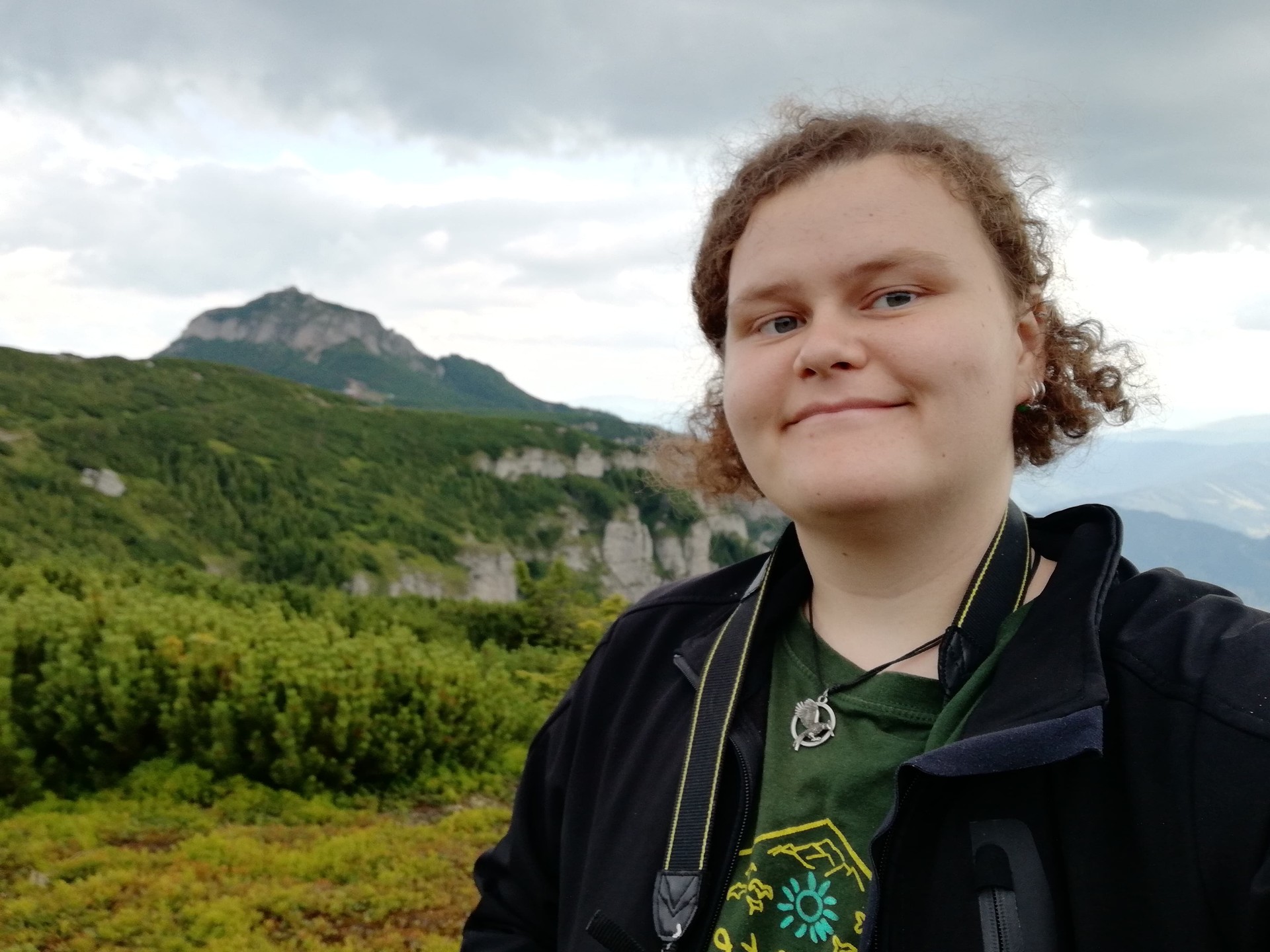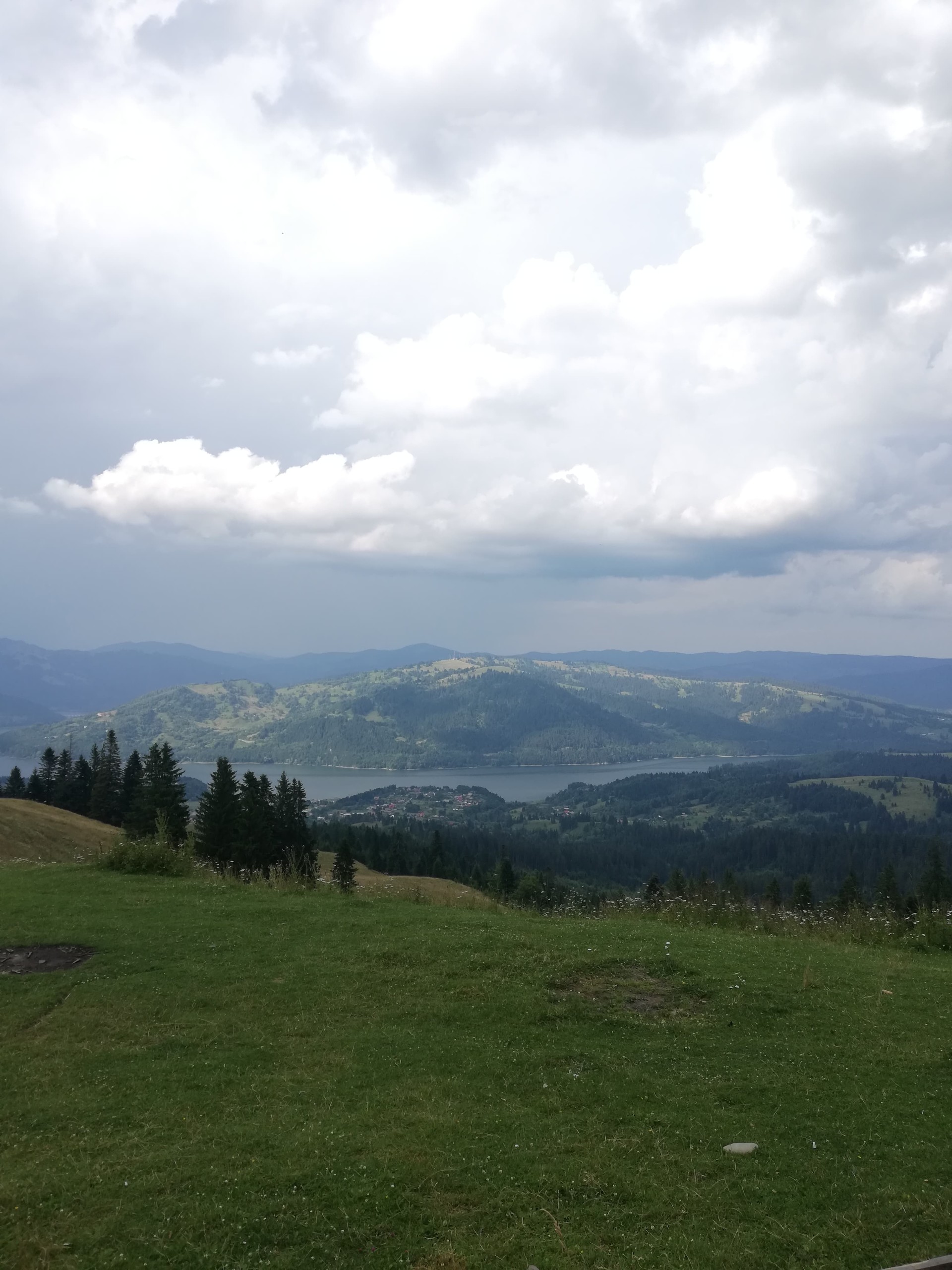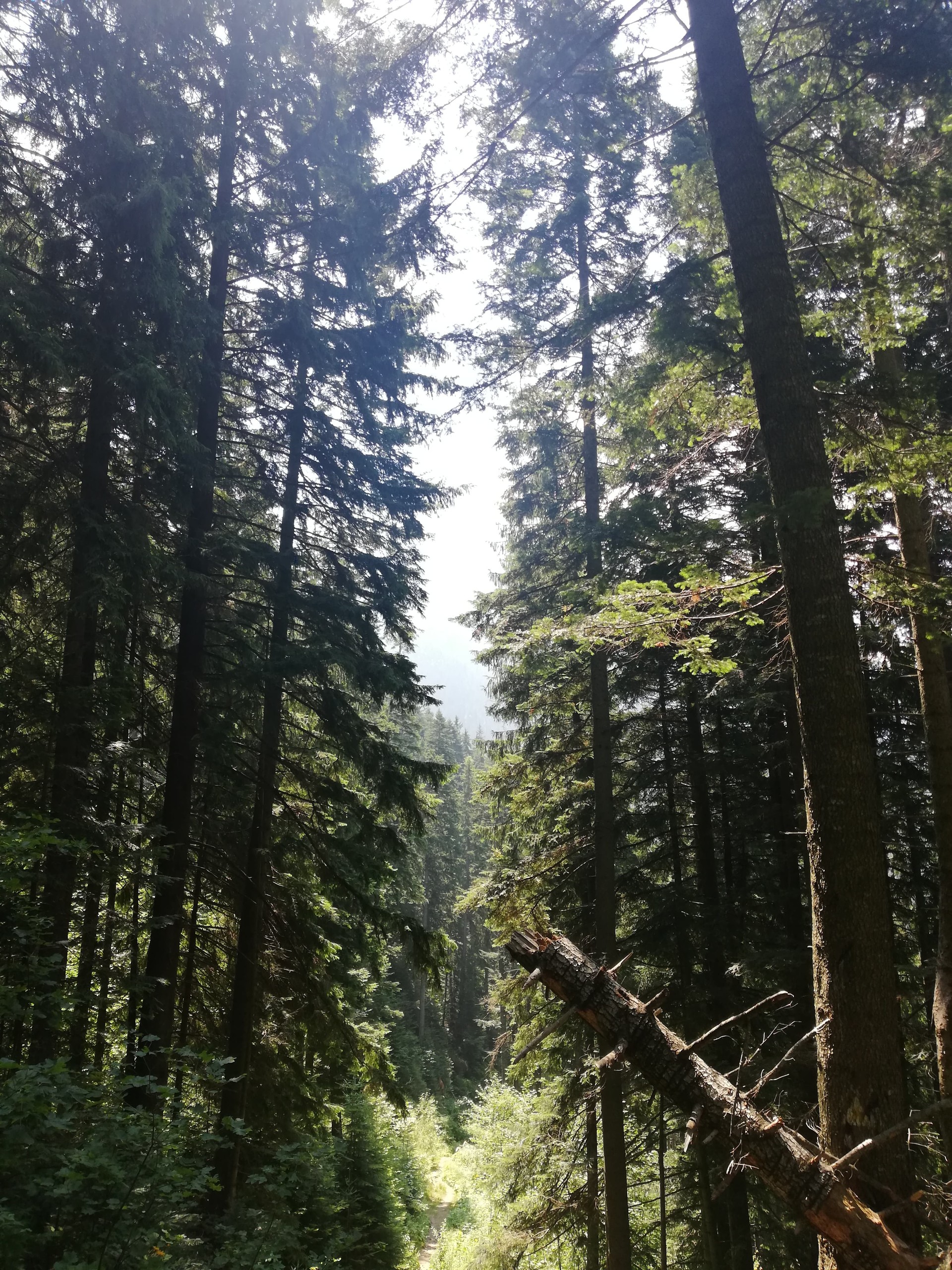Fântânele Cabin and Duruitoarea Waterfall
Fântânele Cabin and Duruitoarea Waterfall

Our trip to Ceahlău mountains does not end with our return in Izvorul Muntelui.
From Izvorul Muntelui to Durău
From here we get in the car and head towards Durău, a resort situated on the other side of the mountain.
But soon we find out that the road we want to go on is closed because of its reconstruction. The national road 15 (DN15) connects the city of Bicaz with Poiana Largă, crossing the entire right bank of the Izvorul Muntelui Accumulation Lake.
Because we cannot drive around here, we know of the existence of another much shorter road, but very damaged and not recommended by the people in the area. As another bypass road through Târgul Neamț is 140 kilometers long, we choose to go on the short road, namely 155F.
I say that if you plan to go on this road you should do it but only if you have no other choice or a very good car, preferably a 4x4 one.

At some point, when we are close to Durău, an extremly beautiful landscape opens up in front of our eyes. Bicaz Lake spreads over the teritory creating an unique view with villages, forests, hills and mountains surrounding it.
Lake Bicaz, also known as Lake Izvorul Muntelui is an artificial lake built on the Bistrița river, being one of the largest lake of this type in Romania. Even though, the construction of the dam and the lake have dramatically changed the landscape around, most of the parts are protected areas of an aquatic reserve.
Staying in Durău
After more than an hour by car on this road full of potholes and sometimes unpaved, we reach Durău, where we stay at the Antia Guest House.
From Durău, the view over the Ceahlău massif is very beautiful and different from the other side of the mountain. The Toaca peak and its weather station are visible, as well as the big Panaghia rock.
At nightfall the sky is full of stars, and the atmosphere above the mountains becomes more and more magical and interesting. The air is cold and fresh.

The next day we go to the Salvamont headquarter, where there also is a tourist information center and many information panels about the routes that start from here to the mountain.
Fântânele Cabin
We decide to climb at the Fântânele Cabin first. So we follow the ascent marked with red stripe that take us inside the forest. The beginning of the the path is quite smooth, but as we approach the cottage, the path becomes more and more difficult to climb because of the many tree roots that come out in our way.
In an hour we reach the cabin.
Fântânele Chalet is located at an altitude of 1220 meters and is an important hiking spot for the travelers that are going towards the heights of the surrounding mountains.
A proof of what I say is the door of the cabin which is full of stickers belonging to several romanian or international mountain groups that pass through here over time.

Here you can spend the night, eat or drink something hot or cold depending on the season.

Large piles of wood stand in front of the cottage, which is a sign that future improvements will be made to the old cottage construction.
We sit a little in the front yard of the cottage to rest while admiring the scenery.

The Toaca peak is visible and dominates the landscape. Behind the cabin, the trail climbs to Curmătura La Morminte, Căciula Dorobanțului, Panaghia and finally to the Toaca Peak. We don’t choose this path because we've already been on top of the mountain the other days, but instead we go on the right trail which leads us to the Duruitoarea Waterfall.
The trail is marked with an yellow triangle and the signpost tells us that we will reach the destination in 2 hours and a half.

A fantastic forest
The trail enters the forest again. Perched above it, if we look up we see how we are under the Toaca peak.

The landscape is more then beautiful. At one point we reach a place where the forest seems untouched in a very long time. Large stones are covered by vegetation, and springs of water burst from below the path we walk on.


We can't hear anything as well. Everything seems so pure and fantastic. I don't know why, but the atmosphere reminds of one of my favorite movies, "The Hobbit. "
After about an hour and a half we reach Poiana Viezuri, where the path we follow intersects with another one that comes directly from Durău. So, from here we start to meet other people on the trail.
We see many people who are poorly equipped for hiking on the mountain. Although this trail does not climb a high peak the road is still quite difficult because of the rugged terrain with grooves and tree roots that are coming out of the ground.
I recall here again, as I did in the previous article about mountain hiking in Ceahlău about the importance of having proper equipment for going on the mountain.

The most important part of the equipment is the shoes, so the mountain boots should not be missing from your feet when you go to the mountain in order to avoid possible injuries and dangers of falling. City shoes such as sneakers or other such shoes are not suitable and recommended for trekking. The shoes must have an adherent sole and be also waterproof.
Duruitoarea Waterfall

As we get closer to the waterfall, we meet more and more people ascending or descending.
Duruitoarea Waterfall is a landmark of the Ceahlău Massif, being an easily accessible place especially from Durău.
Those who want to go further on the Cascade can follow the route marked by the red cross that will take them to Dochia Cottage. The trail is visible on the left side of the waterfall, but it is very steep especially at the beginning and requires proper footwear as well as good physical condition!
Cascada Duruitoarea as well as Polița cu Crini and Ocolașul Mare is a protected area and a natural reservation. The name of the waterfall comes from the strong and continuous noise it makes when it has plenty of water.
The waterfall consists of two large waterfalls, the upper one being longer than the lower one. At the base of the waterfall is a picnic place with metal tables where we stop to rest, have a snack and admire the waterfall.

But in a very short time it starts to rain quite hard, so we have to leave quickly and shelter from the rain under a rock with other people. As the rain shows no signs of stopping, we put on our rain cots and start to descend towards Durău.
It rains with the sun and as we go the drops of rain become more and more rare, until the rain stops. The air is very pleasant and the smell of rain is relaxing and necessary for our senses.
After about 2 hours of descending through the forest, we arrive at Durău and the first thing we do when we arrive at the accommodation is to wash ourselves from the mud we gathered on our feet.
The circuit we do today including all the breaks we take lasts about 6 hours, the distance traveled during this time being 16 kilometers. In total, in the three days of trekking in the Ceahlau Massif we travel 42 kilometers and see the vast majority of the mountain. The next morning we return home with a terrible muscle fever, but with a healthier body and mind and a better heart.
Photo gallery
Want to have your own Erasmus blog?
If you are experiencing living abroad, you're an avid traveller or want to promote the city where you live... create your own blog and share your adventures!
I want to create my Erasmus blog! →























Comments (0 comments)